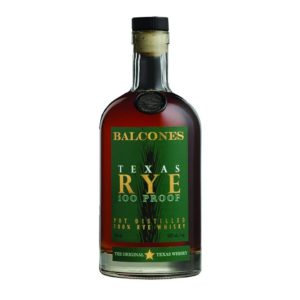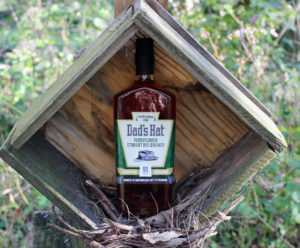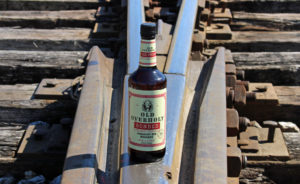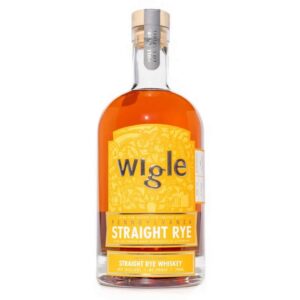Top Ten Rye Whiskeys For Under $50
By Richard Thomas

(Credit: Balcones)
When I revisited my round-up of budget rye whiskeys from 2016 in late November, I found–much to my surprise–that it was still pretty solid, despite being seven years old. Despite time, changes in the whiskey market and the recent ravages of inflation, only Bulleit Rye isn’t still hovering near the $30 price point. That left me with the opportunity to address a different, but related subject: the middle range, premium rye whiskeys.
A decade ago, rye whiskey was often more expensive than comparable bourbon. This was in the wake of a true shortage, one that swept even staples like Wild Turkey 101 Rye off of liquor store shelves for a time. When Knob Creek Small Batch Rye was first introduced in 2012, the price point was an eye-popping $40, this being when Knob Creek 9 Year Old Bourbon was still just $28. What has happened since the Great Rye Craze and Crunch of 2011-12 is that production caught up, prices stabilized, and bourbon prices rose.
Nowadays, there are plenty of bottles of rye at $50 or less to recommend. That price point doesn’t seem as painful was back then either.
Balcones Texas Rye ($42): The Texas distiller chose to mark their 10th anniversary, which was a few years back, but releasing their first rye whiskey. The mash is a mix of standard rye and three different malted ryes of the type more often found in brewer’s wort than distiller’s mash. Balcones then distilled this in their famous pot stills, producing an oilier whiskey, but one that is surprisingly light and fruity, even at 100 proof.

(Credit: Richard Thomas)
Dad’s Hat Pre-Prohibition Rye ($45): Located in the vicinity of Philadelphia, Dad’s Hat has been leading the charge on the restoration of Pennsylvania’s big-and-bold rye whiskey tradition. Their Pre-Prohibition style bottling is made from their no corn, 80% rye, 15% malted barley and 5% malted rye mash bill, aged for four years and bottled at 95 proof. If you want your rye spicy and ballsy, this is a good bottle to have.
Jack Daniel’s Single Barrel Rye ($50): Much fanfare attended the introduction of Jack Daniel’s rye whiskeys, since it formalized their first new mash bill in a century. Nowadays they have a cheaper whiskey, known simply as Jack Daniel’s Rye, plus periodic experimental and limited edition releases, but it’s the Single Barrel Rye represents the premium, regular release entry in the category.
Knob Creek Small Batch Rye ($40): Knob Creek bourbon has been with us for so long, that plenty of drinkers out there don’t know the thing wasn’t introduced until the early 1990s; I can only guess they assume it’s a much older brand. Likewise, Knob Creek Rye has been around for long enough that I do run into people with some regularity who don’t realize this was part of Knob Creek’s first brand extension, including the high octane single barrel and the maple-flavored brands.
This is so much the case that when I mention Knob Creek Rye has only been around for about a decade, I’m met with disbelief. This bottle has become so much the staple that many can’t imagine it’s mature, full-bodied take on Beam rye whiskey wasn’t always sitting there alongside Knob Creek Small Batch Bourbon.
Michter’s US*1 Single Barrel Rye ($45): One of the things so easy to overlook about the flagship Michter’s US*1 Rye is that it is, in fact, a single barrel, and always has been. The labeling is in the same format as their bourbon and sour mash whiskeys, and those two are small batch. My guess is that similarity leads to a cognitive slip; the mind transmutes all three entry run expressions to small batch. But here we are, and that makes Michter’s Rye is the only single barrel Kentucky rye to make this list.

(Credit: Richard Thomas)
Old Overholt Bonded ($28): Jim Beam left their Old Overholt brand in neglect for a long, long time, but starting a few years ago they finally began taking an interest in making something of it, starting by introducing a bottled in bond version. Although not that much more mature than the standard Overholt, it’s a full 20 proof stronger. Compare the price point to Knob Creek Rye above–which is believed to be somewhat older, but the otherwise the same stock at the same strength–and you can see why Old Overholt Bonded is considered such a good buy.
Pikesville Rye ($50): Heaven Hill introduced this revival of a defunct Maryland brand several years ago, and despite the brand lineage, it’s from the same Kentucky style stock as Rittenhouse. It is not actually a Maryland style rye. However, it is a mature 6 year old, bottled at a whopping 110 proof. Although sweeter than it should be, in the way Kentucky ryes are, it is full-bodied and bold.
Russell’s Reserve 6 Year Old Rye ($45): Among rye whiskey fans, Wild Turkey’s rye enjoys a special reputation, and is often the favorite among the sweeter, high-corn, scarcely above 51% rye whiskeys coming out of Kentucky. Russell’s Reserve 6 Year Old Rye is the step above the aforementioned Wild Turkey 101 Rye, which is peculiar if one stops to compare. WT 101 Rye is basically the same age, if not slightly older; and Russell’s Reserve 6YO is 90 proof, so it’s weaker. Why pay more? The difference is in the barrel selectivity that goes into that scoffed at small batch category, making this bottling a good proof for why that term isn’t as meaningless as the croakers so often say. Go ask a Wild Turkey diehard if he would trade this bottle for WT 101 Rye, and see what he says!

(Credit: Wigle Distillery)
Wigle Pennsylvania Straight Rye ($45): The Pittsburgh-based Wigle Distillery is proud of their role in helping to revive the Allegheny spin on Pennsylvania Rye, the Monongahela style. Close cousins with the Maryland style, Monongahela uses wheat in place of corn. Although not as ballsy and spicy as very high rye or 100% rye whiskeys, it brings in a fruity aspect without leaning heavily into bourbonesque sweetness, the way Kentucky ryes do. I don’t think you can call yourself a true rye fan unless you’ve given this one a try.
Woodford Reserve Rye ($35): Alongside Old Overholt Bonded, this is a bargain pick for this somewhat upscale round-up. With 53% rye in the mash, it’s a sweet, Kentucky style rye whiskey, making it more approachable to the whiskey newbie who only (thus far) appreciates a nice bourbon. Add to that it being bottled at Woodford’s reasonable and customary 90.4 proof. Yet it’s made in Woodford’s Irish-style triple set of copper pot stills, which gives it a certain denser character other Kentucky ryes lack.


